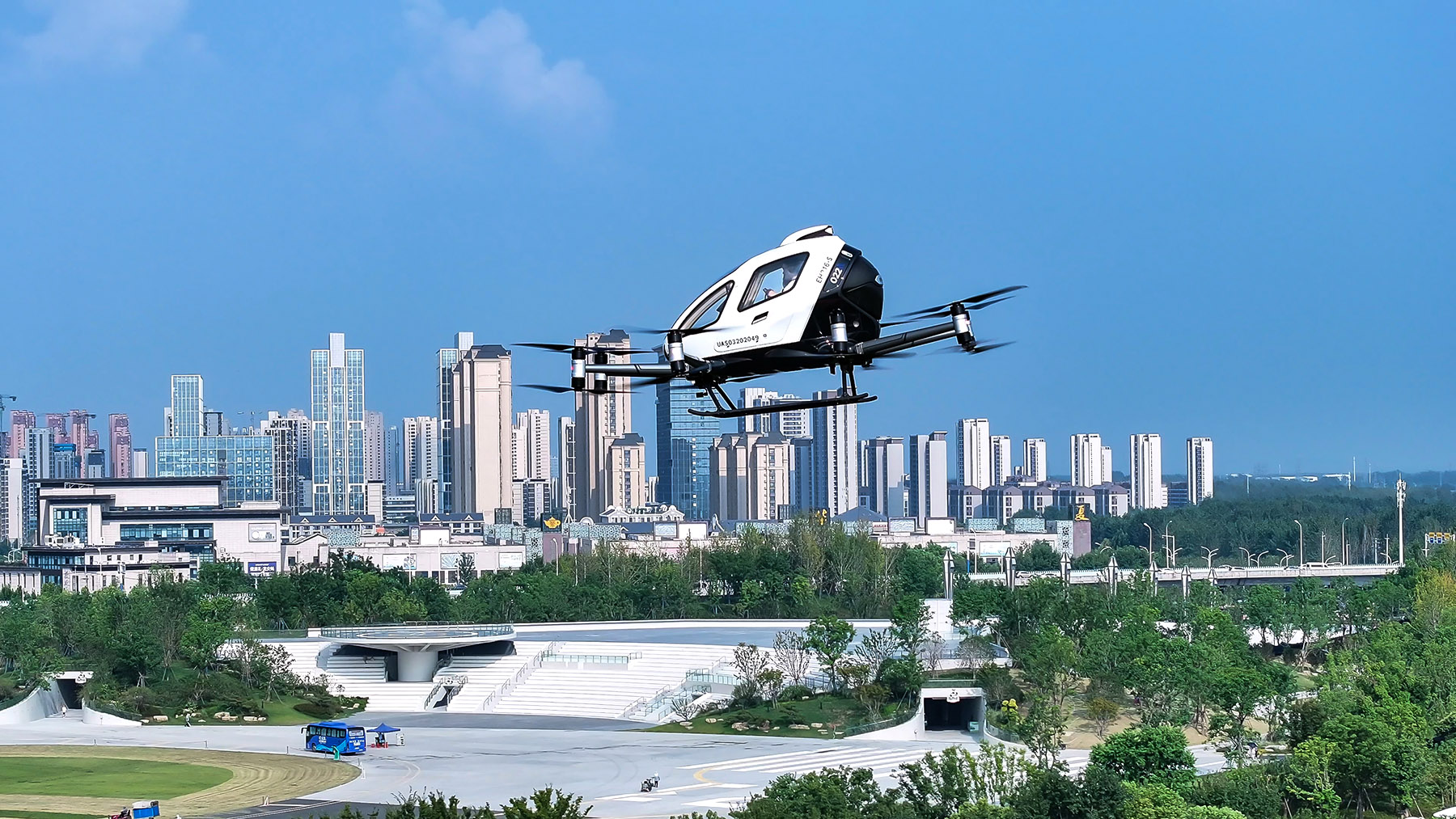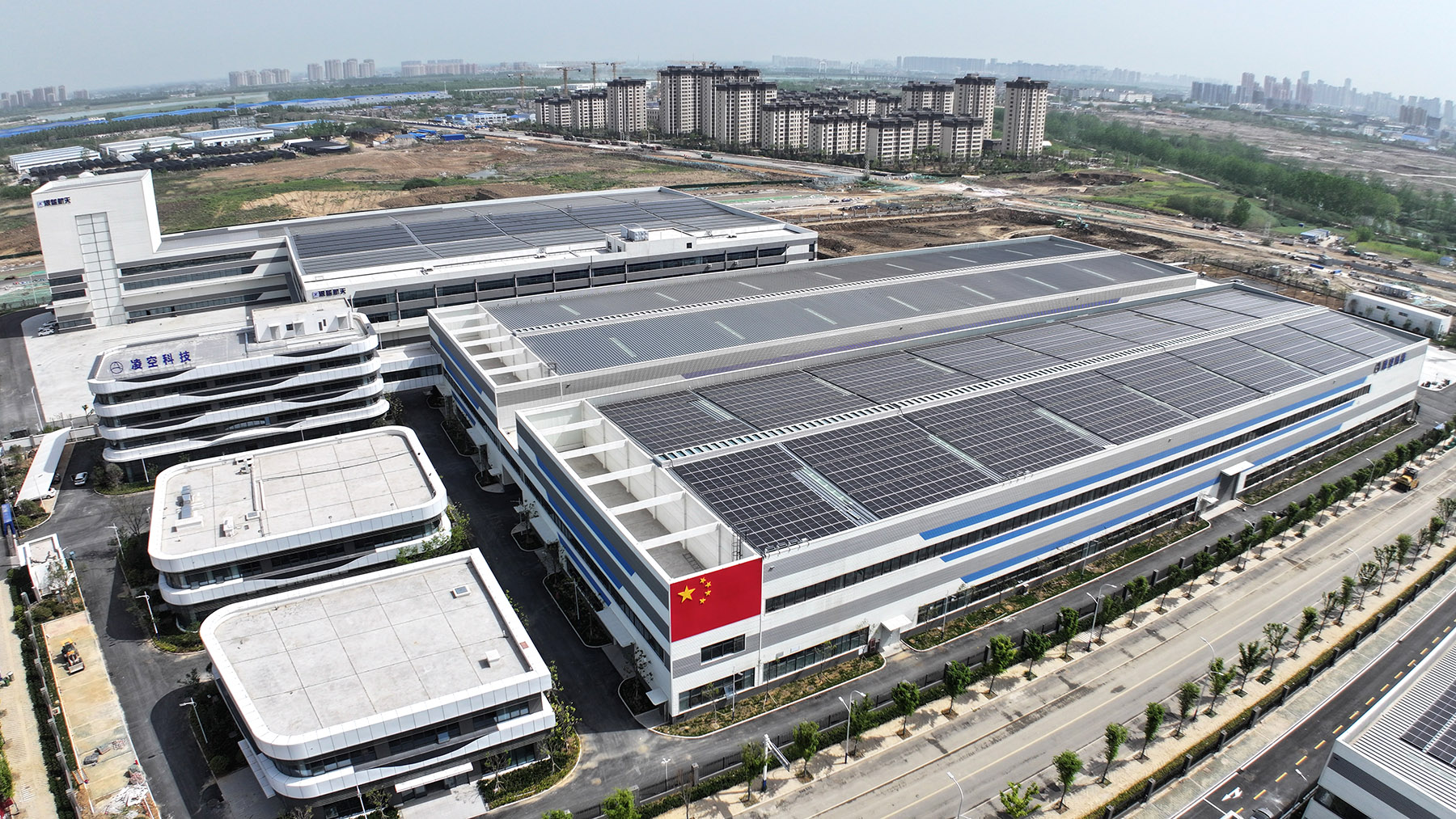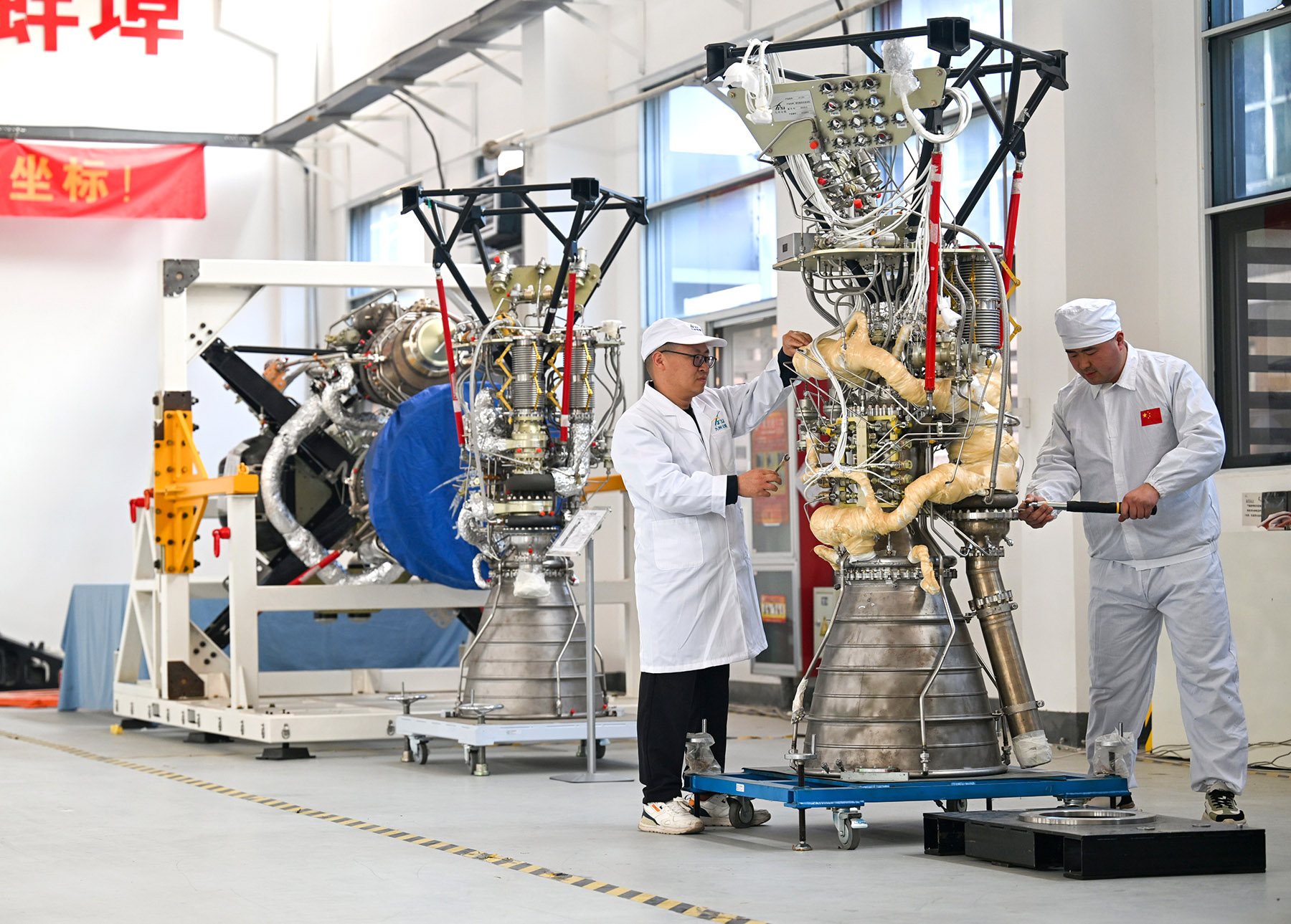Province bringing together innovators, materials producers, engine makers, and launch-service providers under one roof to develop its aerospace economy

On a hot summer morning in Hefei, capital of East China's Anhui province, a futuristic flying taxi hums to life inside Luogang Park, a green space resurrected from an old airport in the city.
The EH216-S, a two-seater electric vertical takeoff and landing aircraft, or eVTOL, lifts gracefully into the air. Its 16 carbon-fiber propellers slice through the breeze. Within seconds, it hovers 50 meters above the ground, casting a white silhouette against the bright sky.
"This aircraft is fully autonomous. It is designed for short-haul city transport, sightseeing, logistics even emergency response. Soon, passengers will be able to book rides above the city's skyline," said Zhang Yuhui, operations director at Hefei Heyi Aviation Co, which has developed the EH216-S.
This is not science fiction.
In March, Heyi became one of the first companies in China to be granted a civil aviation permit for operating manned passenger drones, which Zhang called "a passport to the sky".
READ MORE: Catalytic measures elevate market vitality
China is doubling down on efforts to develop a low-altitude economy, and is likely to include the low-altitude economy as an important part of the 15th Five-Year Plan (2026-30), with an aim to build a "network in the sky", said Gao Yuanyang, director of the General Aviation Industry Research Center, Beihang University.
And Anhui province is quietly emerging as a front-runner in China's strategic shift from being a manufacturing stronghold to an aerospace powerhouse.
While Beijing or Shanghai often grab headlines, Anhui is also building a full industry chain — from urban drone flights to rockets bound for orbit.
During the Chinese top leadership's inspection tour of Anhui in October 2024, the province was urged to build globally competitive advanced manufacturing clusters and preemptively invest in strategic industries, including aerospace, smart aviation and high-end manufacturing.
Across the province, the flying taxi is already operational in Hefei and blood delivery drones connect 20 hospitals within 20 minutes in the city. Tourism flights between Hefei, Wuhu, and Huangshan enable sightseers to enjoy Anhui's ancient landscapes. In other cities of Anhui province, drones also carry meals and medicines.
Together, they form a continuous chain — from low-altitude transport to orbital flight, such as in Bengbu, where rockets and thermal armor already march toward space.

Specifically, low-altitude airspace, which refers to altitude below 1,000 meters, has become a frontier of innovation.
More than 300 local companies in Hefei alone participate in the low-altitude economy in the province. Over 200 drone corridors serve logistics, medical transport, infrastructure inspection — even food delivery in the city.
"Low-altitude airspace is heating up. We're building an entire ecosystem, from R&D through operations, to make Hefei a true 'sky city'," said Cheng Yu, deputy director of the Hefei Development and Reform Commission.
In March 2024, China's civil aviation authority approved Anhui's low-altitude expansion: 30 new airspace zones and 27 drone corridors, both record single-year gains that underpin the province's ambition.
Two hours north, in Bengbu, another city in Anhui, aerospace aspirations take flight in earnest. Bengbu Commercial Aerospace Industrial Park of China, spanning over 260 hectares, now hosts 17 groundbreaking projects.
Inside a workshop of Bengbu Lingkong Technology Co Ltd, a technician delicately manipulates yellow crystal granules, the raw material destined to form a rocket's heat-resistant shield.
"We've developed a modified low-density quartz — phenolic thermal protection material," said Chen Shilin, Lingkong's production head. "It can withstand up to 2,100 C, equivalent to fitting the rocket with thermal armor."
Nearby at Jiuzhou Yunjian Anhui intelligent manufacturing base, a subsidiary of a national high-tech enterprise integrating design and development, assembly and testing of liquid rocket engines — engineers manufacture and test a liquid-methane rocket engine at a new launch test site.
These engines can restart mid-flight and are key for reusable designs. With 3D printing, the company is able to cut production time from six months to about 23 days.
Bengbu Commercial Aerospace Industrial Park of China is the physical embodiment of Anhui's strategy, to bring together innovators, materials producers, engine makers, and launch-service providers under one roof. By 2025, the province expects over 20 local firms forming a seamless value chain from materials to mission architecture.
"Our park is our launchpad to the stars," says Hu Haibo, deputy chief of Bengbu's Yuhui district government. "We're targeting a 20-billion-yuan industrial cluster in commercial aerospace within a few years."
Private capital is fueling the momentum, too. Several leading investment funds have anchored the local innovation ecosystem in the commercial aerospace sector.

On a broader perspective, China sees aerospace — not just defense but also civil applications — as a key future industry. In March 2024, the Ministry of Industry and Information Technology, China's top industry regulator, launched a general aviation innovation and application roadmap, pushing commercial aviation ahead.
Nationwide, drone companies surged by 145 in 2024, over 1.1 million unmanned aviation vehicle licenses were issued, and the low-altitude economy is projected to hit 1.5 trillion yuan ($209 billion) by 2025.Commercial space, on the other hand, propelled by satellite-internet and cargo services, may reach 2.5 trillion yuan.
In July, Autocraft from the United Arab Emirates signed a memorandum of understanding with eVTOL maker Shanghai TCab Technology Co Ltd to purchase 350 E20 eVTOL aircraft worth $1 billion. It marked China's largest single intent order for eVTOLs to date.
The company said that for the 350 E20 eVTOL aircraft, the initial use will be in Abu Dhabi, followed by connections to surrounding cities, and ultimately expand across the wider region.
Also last month, AutoFlight, another major eVTOL player, delivered a ton-class eVTOL, marking a breakthrough in the application of large homegrown eVTOLs.
With a payload capacity of up to 400 kilograms and a maximum cruising speed of 200 kilometers per hour as well as a range of 200 kilometers, the eVTOL features vertical takeoff and landing capabilities and a fixed-wing cruising design, enabling its applications in low-altitude logistics, emergency response and other fields.
ALSO READ: Hefei boosting image as high-tech powerhouse
Xie Jia, senior vice-president of AutoFlight, said that the aircraft type has so far completed more than 40,000 km of safe flights over various terrains across China and other countries and regions, such as the United Arab Emirates and Japan, which help validate its performance and explore its potential application scenarios.
Industry experts said that China's "sky" economy is experiencing an unprecedented period of development opportunities, with rapid advancements in various sectors including aircraft manufacturing, flight services and diverse application scenarios.
Wang Huizheng, deputy head of general aviation of the China Association of Information, said: "With continuous policy refinement and technological breakthroughs, China's vast 'blue sky' market holds immense potential, and is poised to inject powerful new momentum into the country's economic and social development."
Contact the writers at chengyu@chinadaily.com.cn


